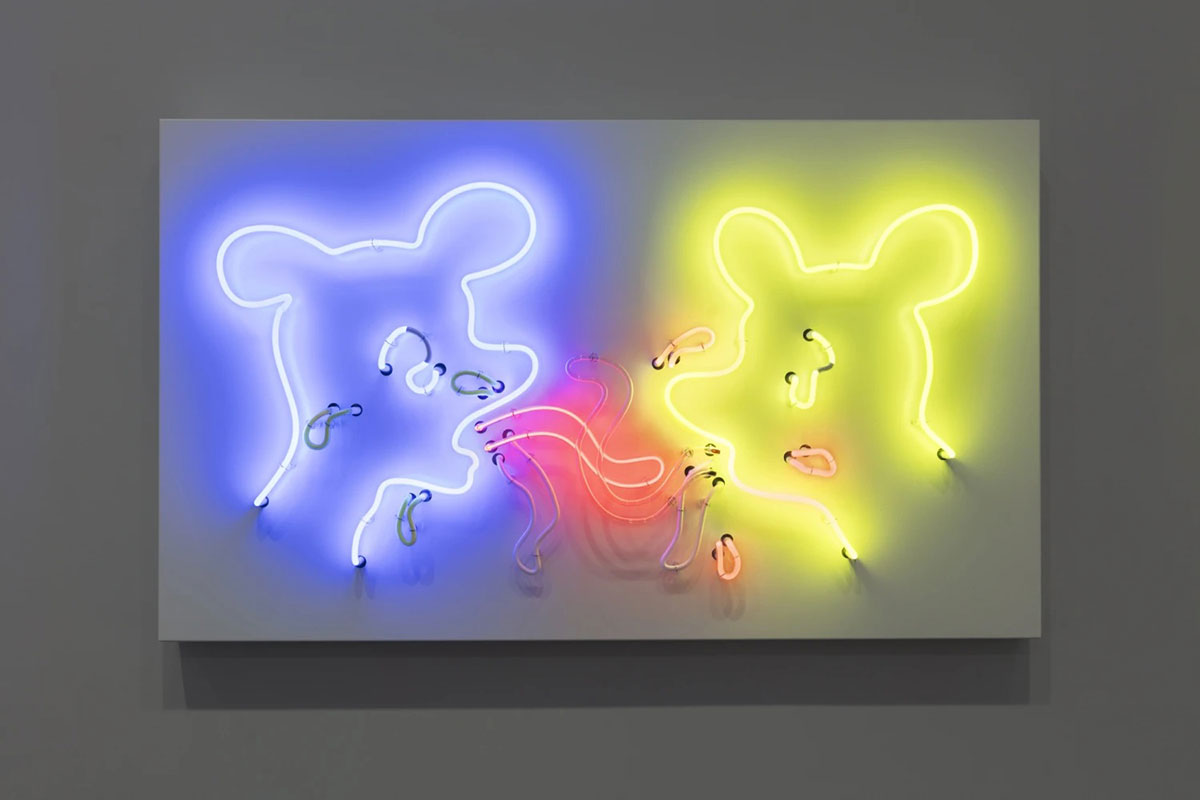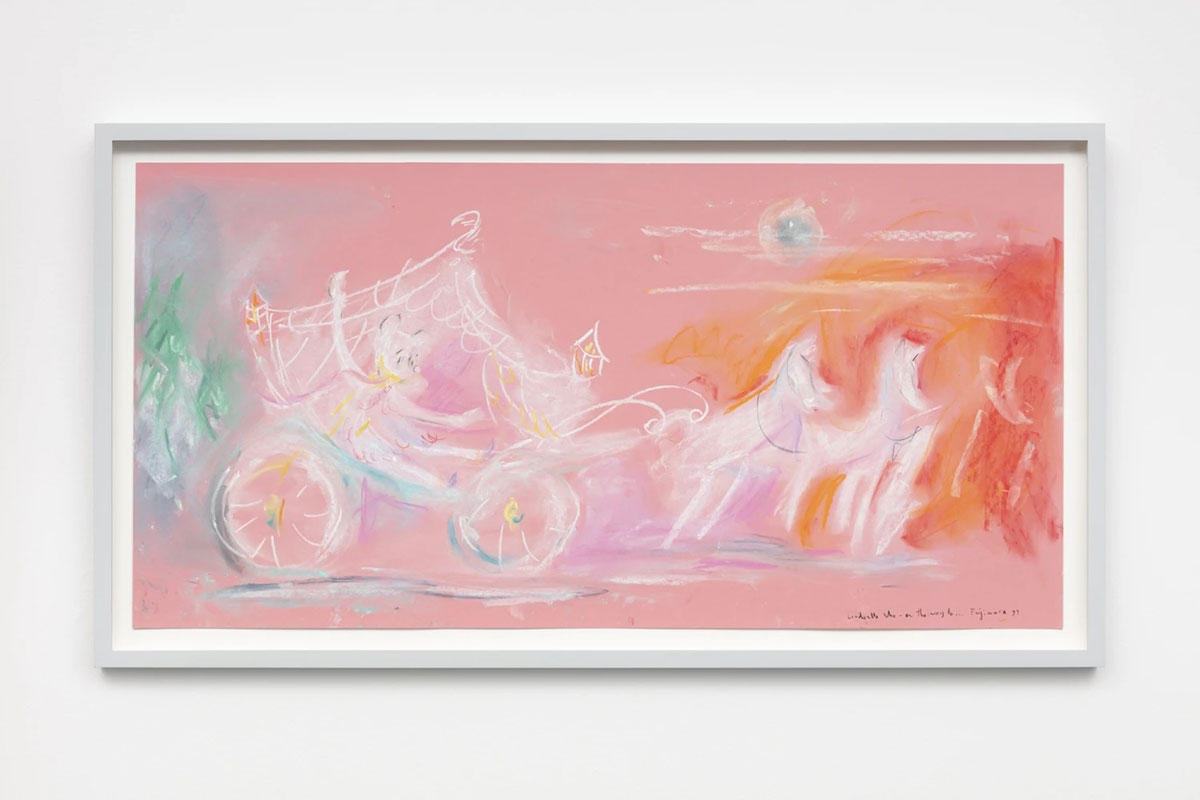ART CITIES: Berlin-Simon Fujiwara
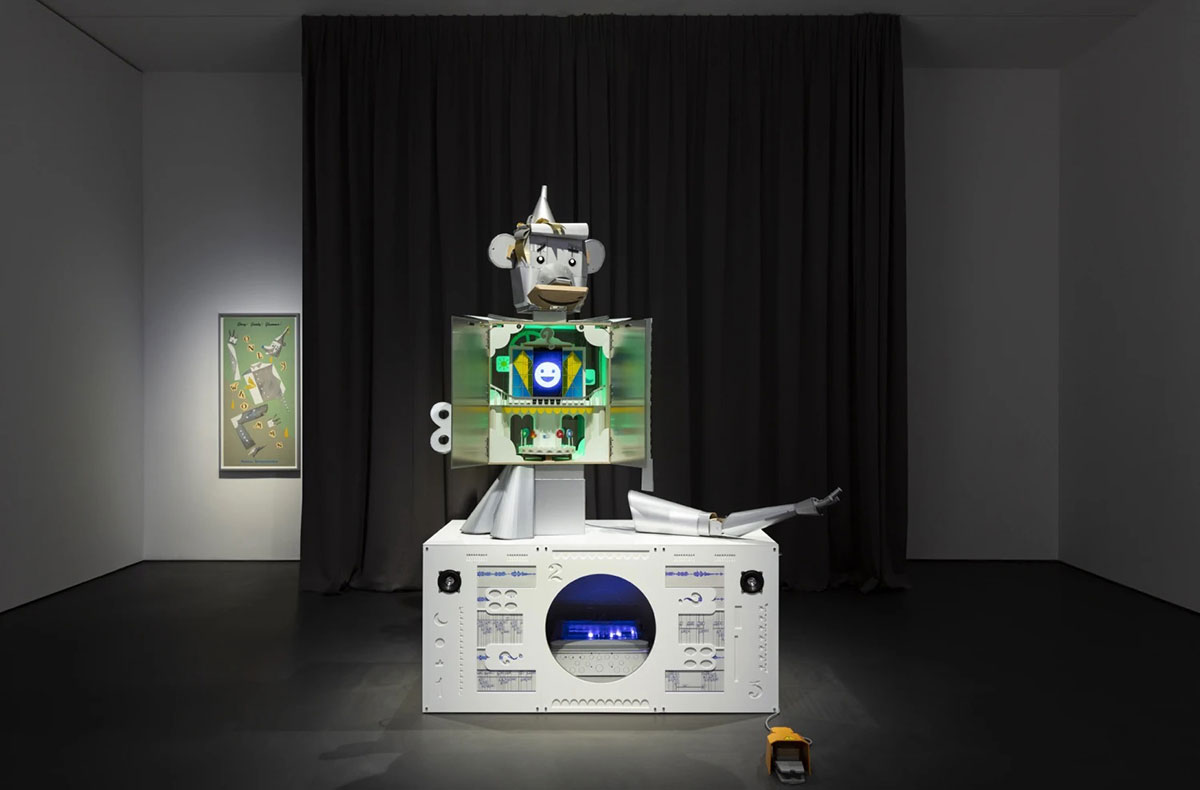 The work Simon Fujiwara offers a unique view into the mechanics of identity construction and the ‘industry of the individual’ in contemporary life. His works emerge from a personal grappling with the contradictions of inherited racial, national, historical, cultural values. In his most ambitious projects that range from a full reconstruction of the Anne Frank House (Hope House, 2016–18) to the “re-branding campaign” for his former high school art teacher after a nude media scandal (Joanne, 2016), Fujiwara deftly navigates culturally potent topics with enigmatic and surprising approaches that broaden conversations and avoid didacticism.
The work Simon Fujiwara offers a unique view into the mechanics of identity construction and the ‘industry of the individual’ in contemporary life. His works emerge from a personal grappling with the contradictions of inherited racial, national, historical, cultural values. In his most ambitious projects that range from a full reconstruction of the Anne Frank House (Hope House, 2016–18) to the “re-branding campaign” for his former high school art teacher after a nude media scandal (Joanne, 2016), Fujiwara deftly navigates culturally potent topics with enigmatic and surprising approaches that broaden conversations and avoid didacticism.
By Efi Michalarou
Photo: Esther Schipper Gallery Archive
Through his multiple formal strategies, Fujiwara is able to use the tools of our hyper-mediated world, from advertising, museum making to theme park design, to hold a distorted mirror to our contemporary, liberal societies possessed with spectacle, fantasy and authenticity. In Simon Fujiwara’s second solo exhibition “Once Upon a Who?”, on view is a highly inventive range of media ranging from collage, drawing and sculpture to stop-motion animation and animatronic sculpture. The large-scale immersive exhibition, “Once Upon a Who?” highlights the multifaceted development of the original cartoon figure, which Fujiwara created in Spring 2020 and first presented at the Fondazione Prada in Milan in summer of that year. Staged within an exhibition design resembling a museum with different rooms devoted to different chapters of their development, visitors encounter Who the Bær: a bear that seemingly has no race, gender, sexuality or nationality. In the first room of Fujiwara’s exhibtion a stop-motion animation is presented in a blue carpeted environment with colorful plush seating, introduces the central themes of the exhibition and the Who the Bær character. Among them are the origin story of the figure and the significance of the characteristics Who has been given; the processes of identity formation, especially regarding gender and race; the effects of mass media, social media, dating apps, and celebrity culture on those processes; as well as cultural appropriation, colonialism and the controversies around stolen artifacts and art. In the subsequent rooms, these topics unfold in a series of specifically themed spaces. Who’s negotiation of identity is explored in two sections through collages and modified images and objects that combine traditional and contemporary representations of feminine and masculine stereotypes. A sculptural animation, “Who’s Childhood?”, draws on conventional depictions of early years identity formation and family life. “Next”, sculptures mimicking cultural artifacts create world history in the image of Who: among them, ancient sarcophagi, pieces of the Elgin marbles, and African and Asian artifacts invoking displays in museums and ethnographic collections, notably Berlin’s controversial, recently opened Humboldt Forum. The adjacent room, the “Whoseum,” features iconic works that reference and remix modern and contemporary artists, from collages that draw on cut-outs by Henri Matisse or Hockney-esque swimming pools, to a small metal sculpture referencing the work of Alexander Calder – all presented with a set of drawings devoted to the Whoggenheim Bilbao. All are Who-ified, so to speak, i.e. given the characteristic silhouette of Who. In the final room, the melancholic chorus of “Who’s Only Whoman?” welcomes visitors. An interactive animatronic sculpture, the robot’s twenty-first-century apparatus has a child-like DIY sensibility. Constantly encountering and performing different identities, we watch Who the Bær as they try, fail, and try again to enact, perform or embody the various lifestyles and identity choices on offer, mostly online. Seen through the distorted lens of a cartoon character, Who the Bær offers a tender but at times disturbing, dada-esque response to a contemporary society possessed with spectacle and identity performance. Nostalgia, anxiety, an inability to commit and a longing for authenticity mark the journey of Who the Baer, a story that seemingly oscillates between the extremes of joy, hedonism and melancholy and loneliness.
Photo: Simon Fujiwara, Who‘s Only Whoman?, 2021, Sculpture: wood, cardboard, paper, adhesive tape, gears, motors, magnets, cabling, metal, Plexiglas, ready-made, pedal switch, Plinth: wood, Plexiglas, speakers, amplifier, media player, servo box, wiring, lock, switch, Duration of song: 1:16 min., 235 x 162 x 75 cm (sculpture), 12,5 x 14,5 x 27 cm (pedal switch), © Simon Fujiwara, Courtesy the artist and Esther Schipper Gallery
Info: Esther Schipper Gallery, Potsdamer Strasse 81E, Berlin, Germany, Duration: 15/1-26/2/2022, Days & Hours: Tue-Sat 11;00-18:00, www.estherschipper.com
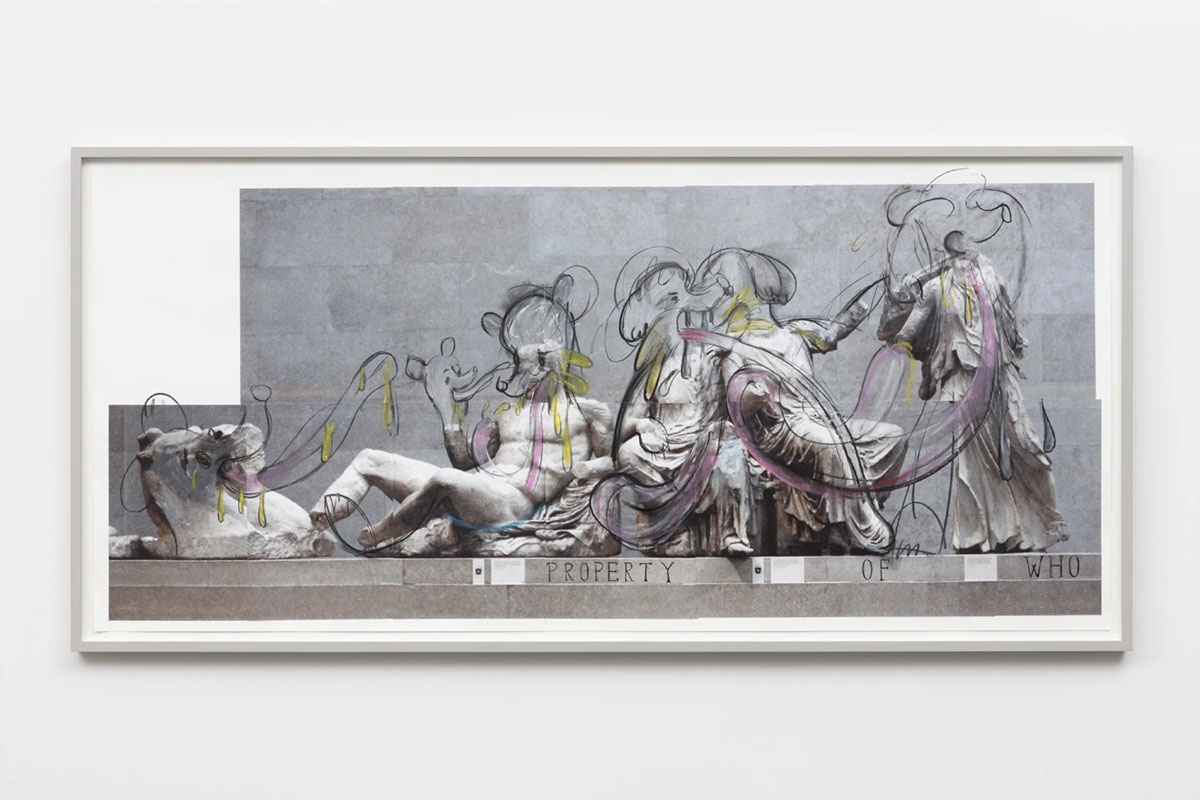
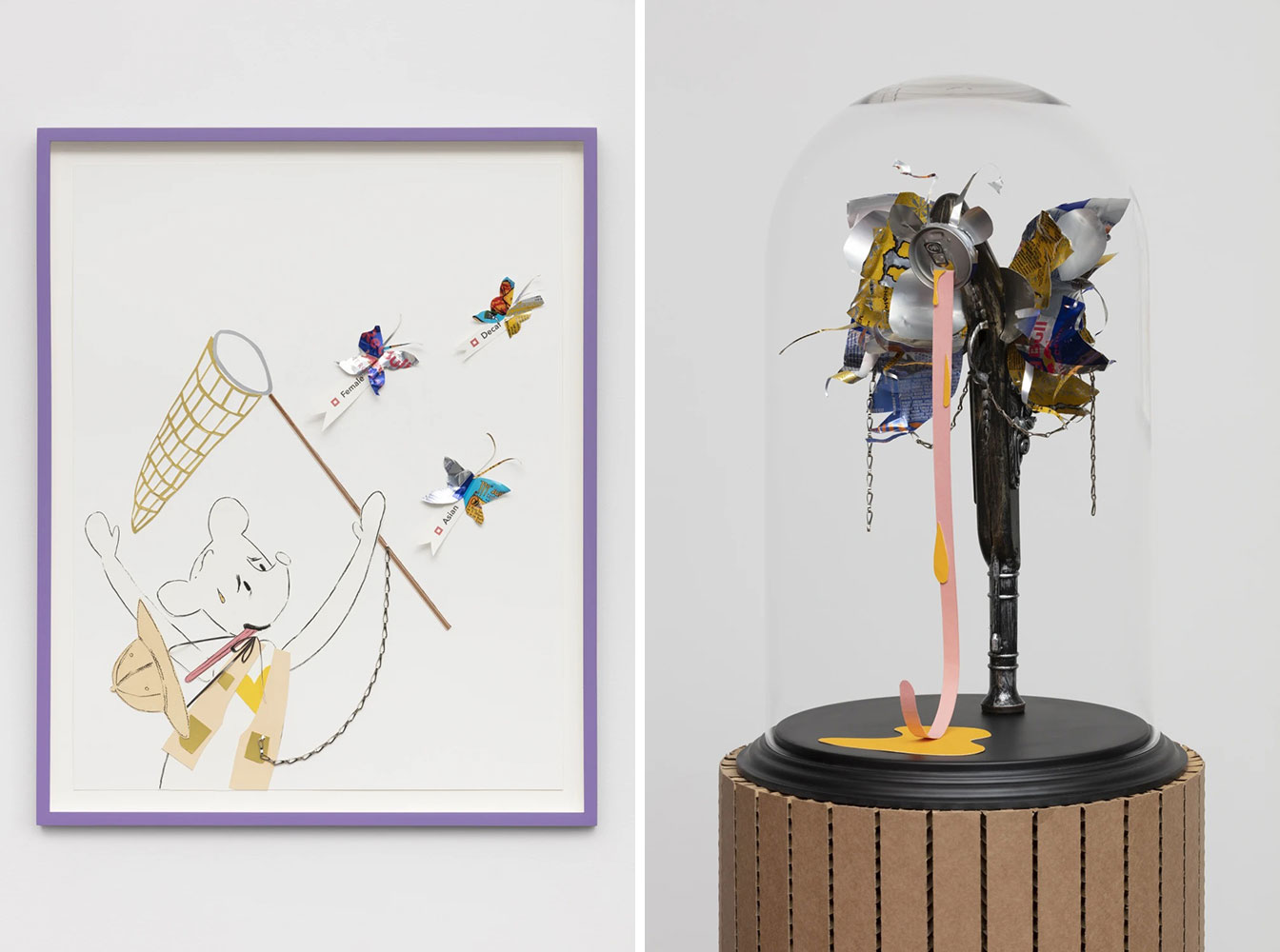
Right: Simon Fujiwara, Who‘s Transformation (Pistol Butterfly), 2021 (detail), Custom made glass vitrine with plinth, modified ready-made, aluminum cans, colored paper, metal chain, 52 x 35 x 35 cm (sculpture), 100 x 36,7 x 36,7 cm (plinth), Photo © Andrea Rossetti, © Simon Fujiwara, Courtesy the artist and Esther Schipper Gallery
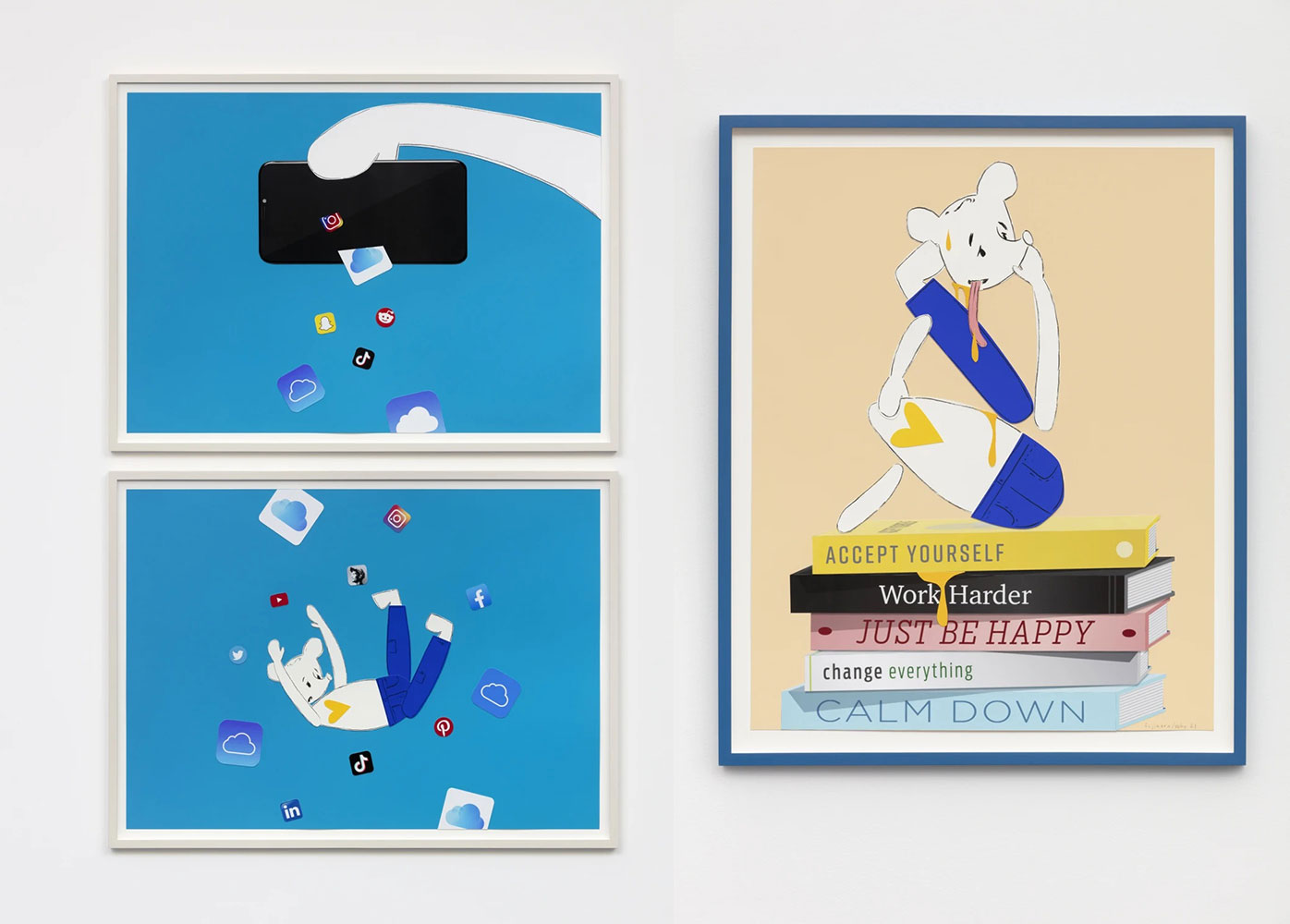
Right: Simon Fujiwara, Self Help Who? (Book Stack), 2021, Colored paper collage, 60 x 47 cm (unframed), 66,6 x 53,6 cm (framed), Photo © Andrea Rossetti, © Simon Fujiwara, Courtesy the artist and Esther Schipper Gallery
